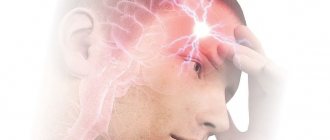There are main types of neurocirculatory dystonia:
- hypotonic type (the main disorders in this case are associated with a decrease in blood pressure);
- hypertensive type (characteristic changes in blood pressure with a tendency to increase)
- cardiac type (accompanied by disturbances in cardiac activity, increased or decreased heartbeat, as well as discomfort in the chest, etc.)
- mixed type (when it is difficult to classify changes in the body; in this case, a variety of complaints and symptoms are characteristic).
Make an appointment with a cardiologist
If neurocirculatory dystonia reduces the quality of your life, or you do not know what diagnosis your ailments are associated with, we invite you to see the best cardiologists at the private Multidisciplinary Medical Center in Moscow. After diagnosis, an accurate diagnosis will be made, and this is the first step towards recovery.
You can make an appointment for a fee with a cardiologist by phone or using a convenient online form, checking the price and work schedule of our specialists on the clinic’s website.
Moscow, st. Krasnodarskaya, house. 52, bldg. 2
+7
We work on weekdays and weekends from 8.00 to 21.00
Clinic of the disease
Most often, at the beginning of the development of a pathology such as neurocirculatory dystonia, symptoms appear weakly and do not directly indicate damage to the autonomic system. The most common nonspecific symptoms are:
- headache;
- severe weakness;
- sweating;
- drowsiness;
- tinnitus and dizziness;
- panic for no reason;
- fainting and a feeling of impending loss of consciousness,
- mood swings;
- anxiety;
- changes in the functioning of the heart, manifested by a decrease or increase in heart rate;
- surges in blood pressure and temperature.
- Sleep disorders
An attack of neurocirculatory dystonia may occur: symptoms will include severe weakness, nausea, hypothermia, headache, abdominal discomfort, hypotension, sweating, etc.
In people over 50 years of age, exacerbation of neurocirculatory dystonia is often more pronounced: symptoms will be more varied and often include signs of existing chronic diseases.
Vegetovascular dystonia general concepts
VSD is a polyetiological syndrome, which is characterized by dysfunction of the autonomic nervous system. The term VSD is outdated; in the International Classification of Diseases it is indicated as somatoform autonomic dysfunction of the nervous system - code F 45.3 [4]. Autonomic disorders are secondary, occurring against the background of mental, somatic diseases, with organic damage to the central nervous system, due to hormonal imbalance in adolescence, etc. In some cases, vegetative-vascular dystonia is an integral part of other, more complex diseases:
- hypertension, hypotension;
- cardiac ischemia;
- endocrine disorders, thyroid diseases.
VSD, as a secondary symptom, manifests itself in mental, nervous, and depressive disorders. The true cause of the pathology is unknown. Presumably – abnormal intrauterine development.
Factors influencing the occurrence of pathological processes:
- Vegetovascular dystonia during pregnancy
- physical, emotional fatigue;
- frequent or prolonged stressful situations;
- chronic infection in the body - caries, tonsillitis;
- injuries;
- diseases of the endocrine and nervous system;
- intoxication;
- bad habits – alcohol, smoking;
- violation of sleep and rest patterns;
- unfavorable working conditions, excessive noise;
- poor nutrition.
Symptoms are of two types - general malaise, complaints about the functions of a particular organ. The psychological painful state is combined with physical discomfort. The main symptoms of VSD:
- increased sweating;
- trembling of limbs;
- headache;
- dizziness;
- weakness;
- chronic fatigue;
- lack of energy;
- increased heart rate, arrhythmia;
- dyspnea;
- redness, pallor of the skin;
- feeling hot or chills;
- slight increase in temperature;
- fatigue;
- bloating;
- nausea;
- fainting;
- belching;
- vomit;
- bowel dysfunction;
- apathy;
- weather sensitivity;
- hiccups;
- rapid breathing;
- impaired urination - difficult, frequent;
- joint pain.
Vegetative-vascular dystonia is often associated with low, high blood pressure, and heart pathologies. Depending on the characteristics of the symptoms and clinical picture, VSD is classified into mixed type, hypertensive, hypotonic, cardiac.
Diagnosis of VSD
Due to the fact that the symptoms of the disease are very diverse, it is difficult to make an accurate diagnosis. It is important to take into account all the patient’s complaints, his medical history, as well as objective research data and the results of additional research methods.
Additionally, studies such as:
- Electroencephalography (EEG)
- Studies of blood vessels of the head and neck;
- ECG;
- Magnetic resonance imaging, etc.
In addition to the neurologist, the examination may involve such specialists as an ophthalmologist, otolaryngologist, cardiologist, endocrinologist, psychotherapist or psychiatrist and others.
Which doctor should I contact?
Despite the fact that this disease does not pose a direct threat to life, it significantly worsens its quality. Therefore, if the symptoms described above are familiar to you, do not delay going to the hospital. Diagnosing the problem can be difficult due to the fact that its symptoms of neurocirculatory dystonia are also inherent in many other diseases.
Start by visiting a cardiologist. If he suspects dystonia of the neurocirculatory type, he will additionally refer you for a consultation with a neurologist and endocrinologist. After diagnosis, an experienced doctor will prescribe a complex of treatment, after which neurocirculatory dystonia goes away completely or goes into long-term remission.
Make an appointment with a specialist, without queues, at a convenient time
+7
Sign up
Treatment methods
Treatment methods for neurocirculatory dystonia depend on the symptoms of the disease. NEARMEDIC specialists, first of all, conduct a thorough examination, identify chronic pathologies and provoking factors. Only then are medications prescribed to normalize heart function, sedatives, and vitamin complexes. Non-drug treatment methods have been successfully used. The appointment of physiotherapeutic procedures, as well as massage, ozone therapy, acupuncture, and water procedures helps to normalize the functioning of the entire body and relieve stress. To normalize the psycho-emotional state, conversations with a psychotherapist or psychologist are recommended.
How can I get a military ID for VSD?
Despite doctors’ mistrust of this diagnosis, with the right actions there are options to avoid the army.
Vegetovascular dystonia is divided into four types:
- hypertensive (increased blood pressure);
- hypotonic (lowering blood pressure);
- mixed (sudden pressure surges);
- cardiac (arrhythmia, tachycardia, oxygen starvation, cardiac disorders).
Read more about whether people with arrhythmia are accepted into the army.
Each type refers to certain symptoms characteristic of specific diseases. The young man needs to undergo a thorough examination. The identified pathology may become a reason to avoid conscription, or to receive a deferment intended for treatment.
For example, high blood pressure is just a symptom, but hypertension, characterized by constantly high blood pressure, is already a diagnosis.
Conscripts who really suffer from constant ailments should spend time on diagnosis in advance, collecting medical documents confirming the incompatibility of the diagnosis with the army.
Guys who have chosen VVA as a way to “scrape” are better off abandoning the idea. Most of the recruits who tried to use this argument were unable to convince the military registration and enlistment office employees when they went to study military science.
Are they recruited into the army with vegetative-vascular dystonia?
When deciding on the suitability of a conscript, the medical board is guided by the Schedule of Diseases for Conscripts . In Art. Section 24 of this document describes vascular diseases of the brain and spinal cord. According to this standard, fitness categories “B” and “B-4” can be assigned.
To count on category “B”, there must be monthly attacks confirmed by medical documents, which are accompanied by fainting. Otherwise, category “B” for dystonia is quite justified.
As for the diagnosis of neurocirculatory dystonia, this issue is described in Article 47 of the Schedule of Diseases. It also provides for documented visits to the doctor.
The conditions for obtaining category “B” or “D” for VSD depend on the type and severity of the vegetative-vascular disorder.
How is the medical examination carried out?
To obtain exemption from the army, you need to collect your entire medical history.
Important: all periods of exacerbation must be noted in the outpatient chart.
First of all, it is necessary to diagnose the disease at the first signs of disturbances (headache, increased blood pressure) in order to determine an accurate diagnosis.
To do this, you should contact a cardiologist, endocrinologist and neurologist and undergo an initial examination.
Subspecialists give directions for additional research:
- Cardiogram of the heart, ECG with stress (registration of arrhythmia and other disorders).
- Complete blood count and blood test for hormones.
- Chest X-ray.
- Daily blood pressure monitoring (ABPM).
- Ultrasound of the thyroid gland and the entire abdominal cavity.
- Ultrasound of the heart and valves (ECHOCG).
- MRI of cerebral vessels.
- Orthostatic test (Tilt test, study of autonomic nervous system disorders).
It is important to undergo hospital treatment and obtain a cardiologist's opinion.
During initial military registration or directly during a medical examination, if the condition is unclear (complaints of increased heart rate, lack of air, irritability and loss of sleep), the conscript must be sent for additional examination.
Symptoms
This disease has many faces, it can manifest itself in very different ways. In this condition, the activity of the cardiovascular system is disrupted, which responds with aching or stabbing pain in the heart, interruptions in the functioning of the organ or acceleration of its rhythm, pulsation of the vessels of the neck and head. Pain occurs after suffering stress, overwork, due to weather changes.
The next morning the face is swollen. Asthenic syndrome develops, due to which a person feels weak, quickly gets tired, and his performance decreases.
Disturbances are also observed in the respiratory system: shortness of breath appears when walking quickly, a feeling of incomplete inspiration, a lump in the throat, the condition worsens in stuffy rooms. Sometimes there is a fear of suffocation.
At night, vegetative crises often occur: headaches, sweating, dizziness, and darkness in the eyes. The person may faint or lose consciousness. The duration of such a crisis is 20–30 minutes, but sometimes this condition can last for several hours. Sometimes it is accompanied by excessive urination or loose stools. There are also slight temperature fluctuations in one direction or another.
Possibility to serve with NDC of hypertensive type
Even with moderate severity and clinical, complicated forms of manifestation of neurocircular dystonia, a conscript is not immune from military service without additional examination
, repeated hospital treatment and medical supervision.
NDC is officially considered a reason for deferment or exemption from military service according to the register of the Schedule of Diseases (Articles 24, 47). But, most often, the conscript is assigned a fitness category with some restrictions on the type of troops recommended.
Attention! A diagnosis of hypertensive type NCD without the presence of concomitant diseases (recorded in the medical record) does not completely exempt a conscript from military service.
When is a conscript considered fit for military service?
In the case when a young man is diagnosed with neurocirculatory asthenia, but of a moderate course, and heart rhythm disturbances are transient, which does not exclude the ability to perform military duties, the fitness category “B-3” is determined for him.
Signs characteristic of rare single extrasystoles of rest and sinus arrhythmia are not grounds for declaring a young man unfit for military service. Therefore, in the situations described, the subject is called up for military service.
5 / 5 ( 1 voice )










